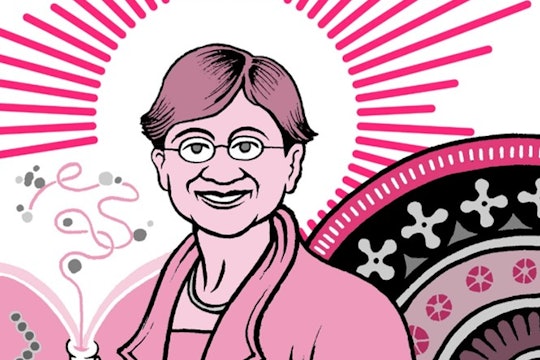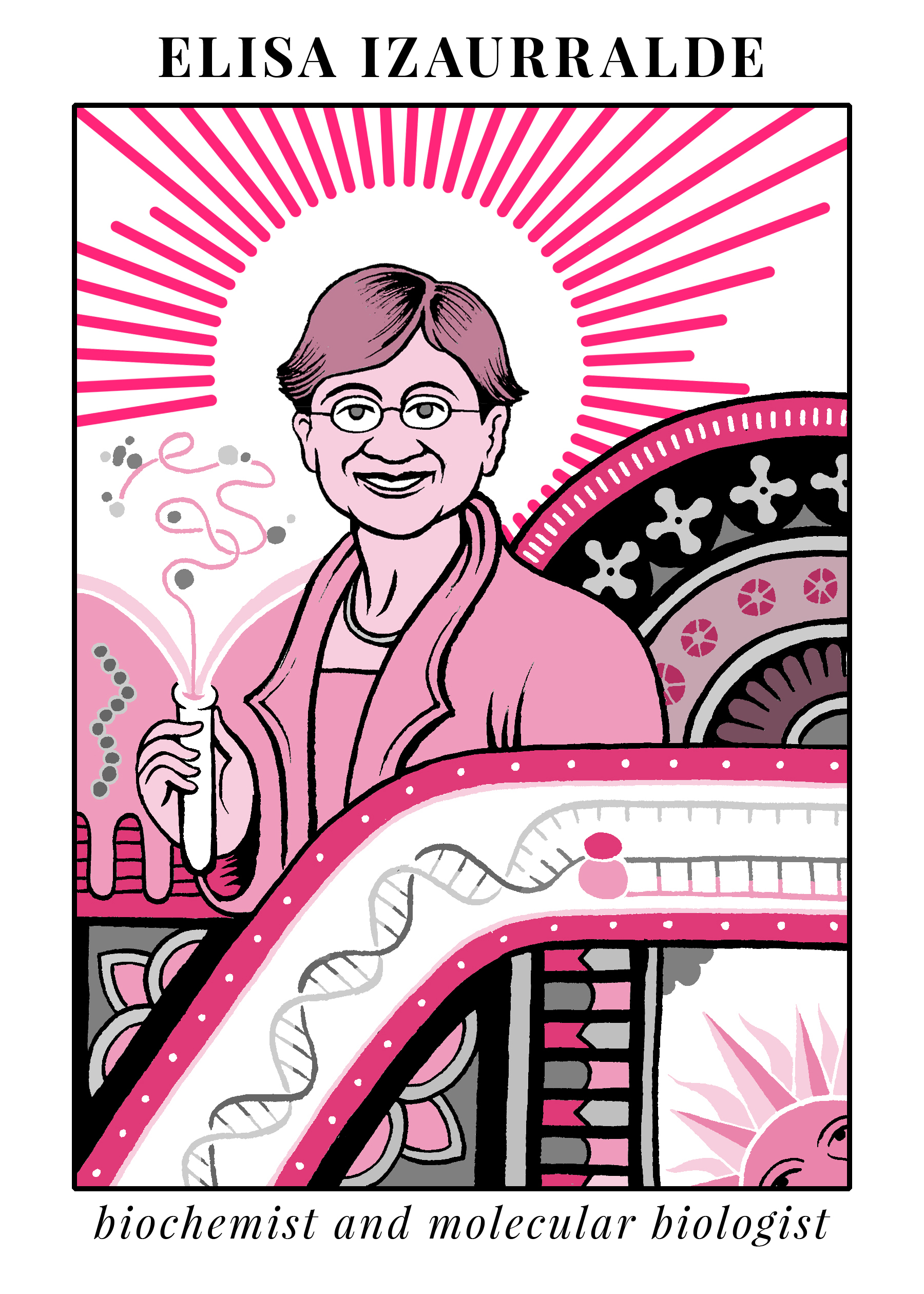
Matteo Farinella
Meet Elisa Izaurralde, who decrypted the mystery of messenger RNA
She made big contributions to our understanding of tiny cellular machinery
Becoming a scientist is hard work. Becoming a renowned scientist is even harder. Elisa Izaurralde managed to do both, becoming a distinguished biochemist and molecular biologist. She made significant contributions to understanding how RNA, DNA's chemical cousin, shuttles from place to place in the cell, turning on and turning off gene expression.

Matteo Farinella
From a young age, Izaurralde had always known that she wanted to study science. But, as she recalled later in life, “In my times, there wasn’t much scope for good research in biology and biochemistry [in Uruguay].” So in the late 1970s, Izaurralde left her home in Montevideo, becoming one of thousands emigrating from an increasingly dangerous country, where a military dictatorship was known for widespread arrests, torture, and disappearances.
At seventeen, the young Izaurralde's first move was to Switzerland, where she began studying at the University of Geneva. She stayed for ten years, completing an undergraduate degree in biochemistry, then a PhD in molecular biology under Ueli Laemmli, and finally, her first postdoctoral position. Most of her research in Geneva focused on understanding how DNA interacts with scaffolding proteins in the nucleus.
It wasn’t until she joined Iain Mattaj's lab for a second postdoc at the European Molecular Biology Laboratory in Heidelberg, Germany that she began to work on RNA. At the time, RNA—the single-stranded molecule that regulates how DNA’s genetic information gets carried from the nucleus to the rest of the cell—was much less well understood. In the early 1990s, scientists didn’t know how RNA escaped the DNA-filled nucleus. But Izaurralde soon discovered a molecular complex called the nuclear-cap binding protein (CBC). The CBC is a protein that attaches to RNA molecules and labels them for trimming—a step that acts like a passport, allowing RNA to exit the nucleus. This export of RNA is vital to cells' survival. Without it, our genetic information would lay dormant in the nucleus, like a blueprint with no architect.
While this was an important discovery, Izaurralde still wanted to figure out the exact protein that helps shuttle a particular kind of RNA out of the nucleus. Messenger RNA, or mRNA, acts as a sort of molecular message in a game of telephone. It carries a transcribed message from a gene to the rest of the cell, where the message gets translated into a protein.

Elisa Izarraulde was fascinated by all things RNA
With RNA escape on her mind, Izaurralde returned to Geneva in 1996 as a group leader. Her lab ran experiment after experiment to pinpoint the RNA export machinery. They finally discovered TAP, also referred to as Nuclear RNA export factor 1 (NXF1). Izaurralde demonstrated that in a complex with other proteins, NXF1 directly attaches to mRNA, helping it through pores in the nucleus. This discovery was especially important because most other RNAs rely on a different protein— β-karyopherin—to escape the nucleus. She would later share the prestigious Leibniz prize for her work on RNA transport with structural biologist Dr. Elena Conti.
In 2005, Izaurralde moved to the Max Planck Institute for Developmental Biology in Tübingen, where she became the Director of the Department of Biochemistry. There, the focus of her work shifted to a different, even more understudied form of RNA—microRNAs. These tiny molecules intercept RNA messages leaving the nucleus by latching onto the larger molecules, and either silencing the message or marking the molecule as garbage. Because our bodies constantly need to change the molecules it produces—like increasing amounts of enzymes that will break down food after a meal—different RNA messages are always fine-tuning which genes get translated into proteins. Because microRNAs help control which messages get sent, they are an important regulatory step in cells. Izaurralde and her group helped explain this complicated process, which had previously been largely a mystery.
Izaurralde’s work has opened the door for possible therapeutic treatments for everything from metabolic diseases to cancer. Sadly, Izaurralde herself died from metastatic cancer at age 58 in 2018. She was fond of hiking in the forests and the Swiss mountains, and chose to have her ashes scattered in the Schönbuch Forest in Germany.
Izaurralde was a fierce, contemplative, and competitive researcher, but she was also known for her mentoring and support of her team—for example, she would have cake celebrations commemorating every new lab publication. It is clear from tributes from friends and colleagues that she will be sorely missed. As Larry Zwiebel, Cornelius Vanderbilt Chair of Biological Sciences at Vanderbilt University recalls, "As a scientist, Elisa was a true force of nature with a seemingly insatiable appetite for research—that was joyfully matched by her splendid humanity."
